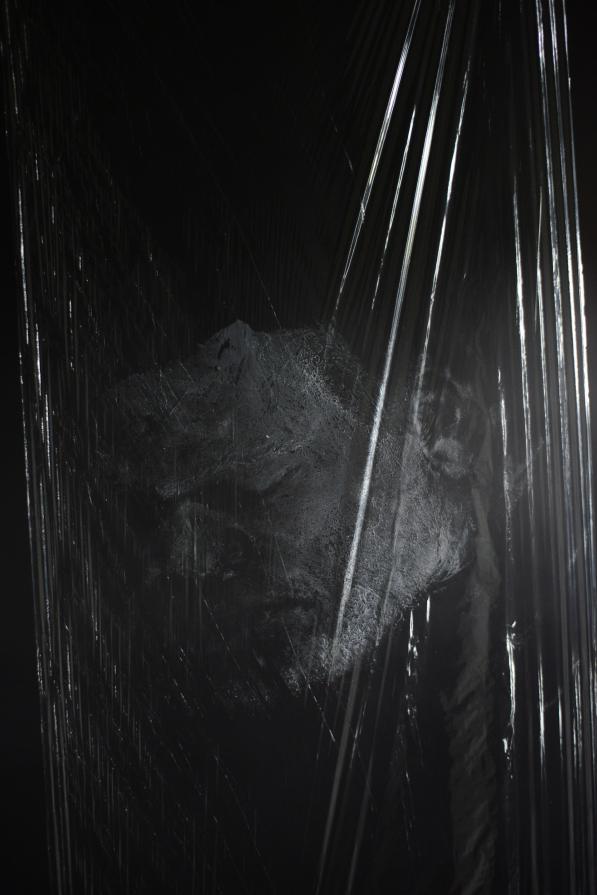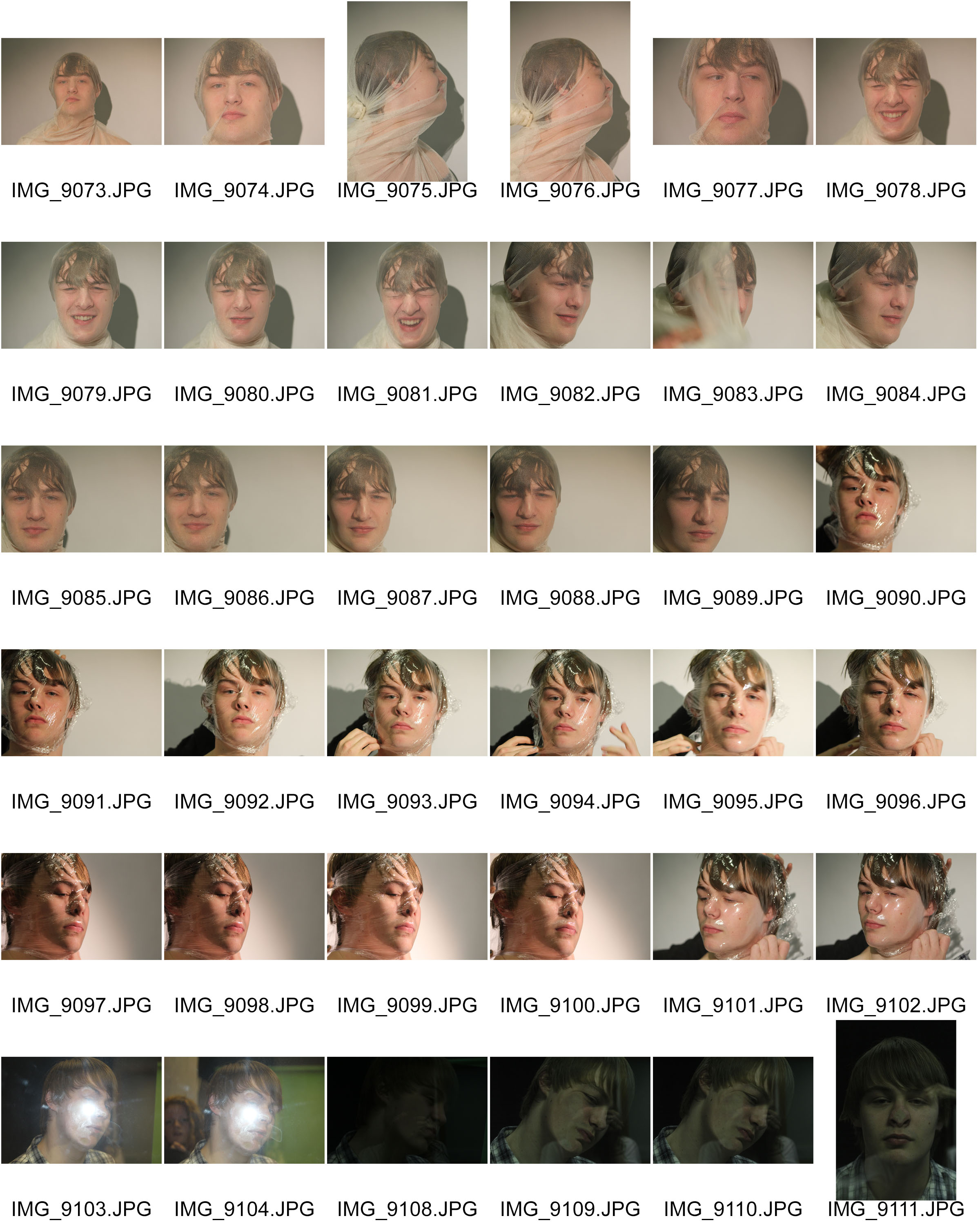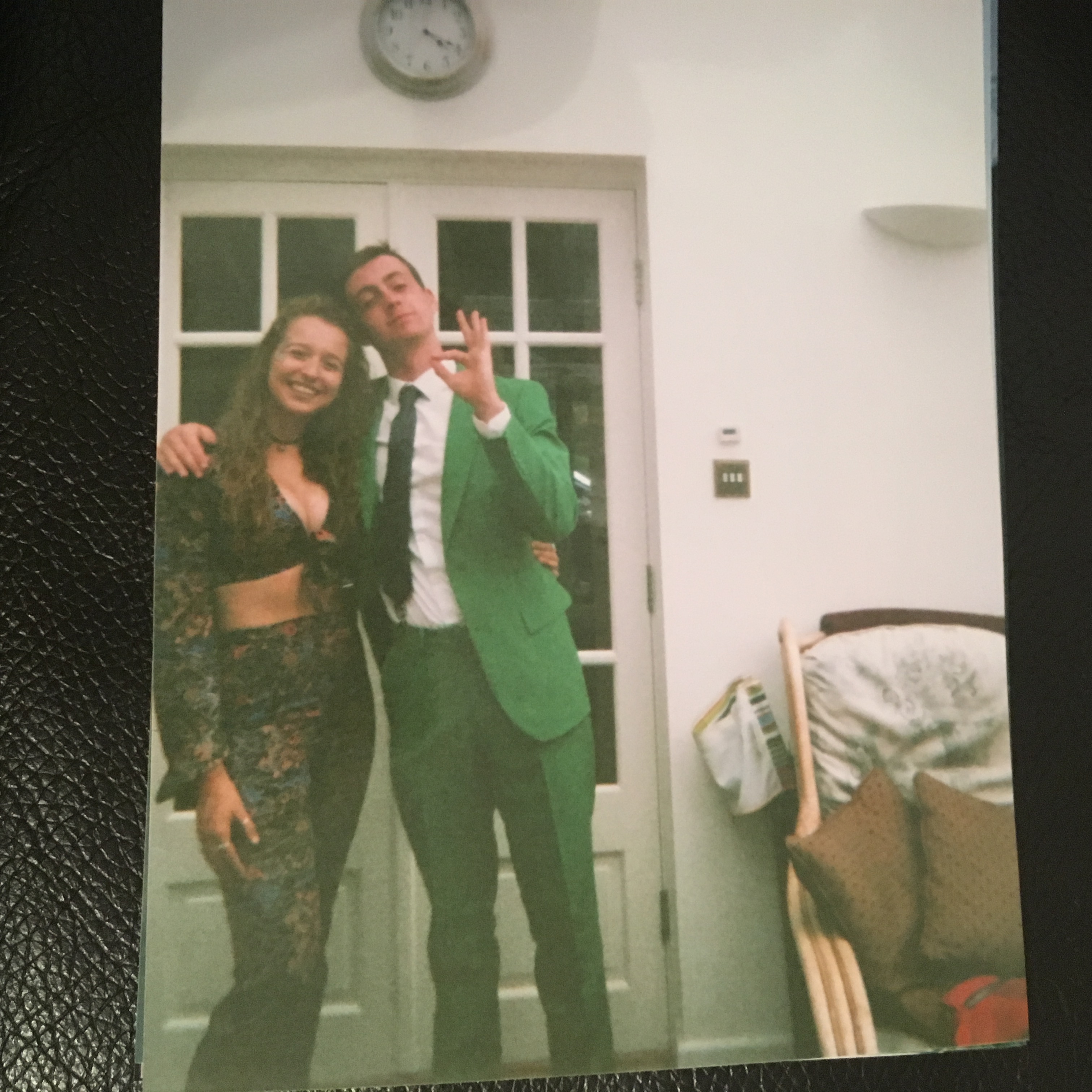PETER AINSWORTH
https://www.celesteprize.com/artwork/ido:264313/
Peter Ainsworth was born in 1978. He is an artist based in London who works with sculpture, printmaking, video and photography. Ainsworth’s most recent projects are made from medical and industrial materials used in relation to photographs and videos. I came across Ainsworth after taking and editing the images of my distorted face shoot. Ainsworth also did a project using clingfilm to create different effects in his images. The project which I came across by Ainsworth is called LIFE MASK. He did the project in 2013 and it is a documentation of a performance: the creation of a self-portrait in cling film and soap. According to Ainsworth the work is an ‘exploration of self on a domestic scale.’ The photos are a creation of a life mask in reference to the ‘obligatory Selfie that pervades online representations that at once purporting to be a ‘true’ image, an indexical imprint but also a surface, a façade designed to present oneself from a flattering viewpoint.’


The edit bellow of one of Ainsworths images is very similar in comparison to me edit from my distorted face shoot. Both images have a black, simple background so that the whole focus is on the figure rather than any distractions. I believe Ainsworth used a studio light for his images, like me, to create the reflections with the clingfilm. The bright reflections work really well in contrast to the dark background. Ainsworth uses the clingfilm as more of an overlay for his images, to create an overall look. However, I used the clingfilm to cover the face so that the reflections and shiny effect is only on the figure.
COMPARISON
The image below by Peter Ainsworth is very similar compared to my final edited image from the shoot. The image by Ainsworth is taken of himself with his face painted white. He has used clingfilm to cover the whole frame to create an unusual texture look. For the shoot you can see that Ainsworth used studio lights to create a reflection of the clingfilm which in turn adds another dimension to the image. Ainsworth’s image is in black and white, like mine, because it reveals the different tones and textures much more when in black and white. Instead of covering the whole image with clingfilm, I used the clingfilm to wrap round the subjects face to dis-form it in some way. I did this because I wanted to create a similar effect to Jenny Saville’s images.
PETER AINSWORTH

MINE
































